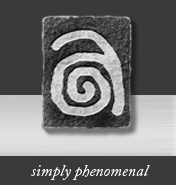"Wildly Entertaining, Absurdly Ambitious, and Astutely Critical"
December 14, 2009
 Outbreak! The Encyclopedia of Extraordinary Social Behavior continues to generate press, including a column entitled “An outbreak of confusion: Mass hysteria, outlandish obsessions, bizarre sects: What lies at the heart of extraordinary social behaviour?” in The Guardian (UK) in August and a mention in a story called “Oh, Maya! Is 2012 the end? Film boosts doomsday frenzy” in USA Today in November. But it’s the reviews that concern us here and they have been uniformly positive. Inconvenient History calls the book “a wildly entertaining, absurdly ambitious, astutely critical, deceivingly academic and nearly definitive study of the myriad crazes, manias, panics, scares, fads, fashions and other sundry sociogenic phenomena that have made history while eluding historians.” This “Cthulhu-sized tome,” writes Nick Redfern in UFO Mystic, is not just “scholarly; but it is also highly informative, insightful, illuminating and witty… A fantastic read.” And in Cryptomundo, Loren Coleman, though not particularly pleased with the book’s handling of some subjects (“I find their black and white skeptical approach to a few of the encyclopedia’s events as being wholly too psychological-based, without any appreciation for the possible underlying factual reality to be found in some of these encounters”), nevertheless concludes that “the book is a masterpiece.” The International Cognition and Culture Institute blog found the book to be “quite an impressive endeavour that can be used for scholarly purposes (it is well referenced) and for fun (because people do weird things sometimes).” And finally, FOAFtale News, the newsletter of the International Society for Contemporary Legend Research, notes that “It is a real encyclopedia, containing some 340 articles of very variable length. The scope and diversity of the bibliography are remarkable; it includes numerous references from other languages than English. The large choice of nineteenth century French studies, mostly medical, of visions and apparitions is especially notable. Original sources are often referred to, and the quotations of Renaissance or seventeenth century books are numerous. This does not exclude modern references as will be shown in the example from Iraq…Exceptional by its scope and the diversity of its sources, this Encyclopedia is an essential work instrument for those interested in the surprising extent of non-standard collective behavior.”
Outbreak! The Encyclopedia of Extraordinary Social Behavior continues to generate press, including a column entitled “An outbreak of confusion: Mass hysteria, outlandish obsessions, bizarre sects: What lies at the heart of extraordinary social behaviour?” in The Guardian (UK) in August and a mention in a story called “Oh, Maya! Is 2012 the end? Film boosts doomsday frenzy” in USA Today in November. But it’s the reviews that concern us here and they have been uniformly positive. Inconvenient History calls the book “a wildly entertaining, absurdly ambitious, astutely critical, deceivingly academic and nearly definitive study of the myriad crazes, manias, panics, scares, fads, fashions and other sundry sociogenic phenomena that have made history while eluding historians.” This “Cthulhu-sized tome,” writes Nick Redfern in UFO Mystic, is not just “scholarly; but it is also highly informative, insightful, illuminating and witty… A fantastic read.” And in Cryptomundo, Loren Coleman, though not particularly pleased with the book’s handling of some subjects (“I find their black and white skeptical approach to a few of the encyclopedia’s events as being wholly too psychological-based, without any appreciation for the possible underlying factual reality to be found in some of these encounters”), nevertheless concludes that “the book is a masterpiece.” The International Cognition and Culture Institute blog found the book to be “quite an impressive endeavour that can be used for scholarly purposes (it is well referenced) and for fun (because people do weird things sometimes).” And finally, FOAFtale News, the newsletter of the International Society for Contemporary Legend Research, notes that “It is a real encyclopedia, containing some 340 articles of very variable length. The scope and diversity of the bibliography are remarkable; it includes numerous references from other languages than English. The large choice of nineteenth century French studies, mostly medical, of visions and apparitions is especially notable. Original sources are often referred to, and the quotations of Renaissance or seventeenth century books are numerous. This does not exclude modern references as will be shown in the example from Iraq…Exceptional by its scope and the diversity of its sources, this Encyclopedia is an essential work instrument for those interested in the surprising extent of non-standard collective behavior.”









